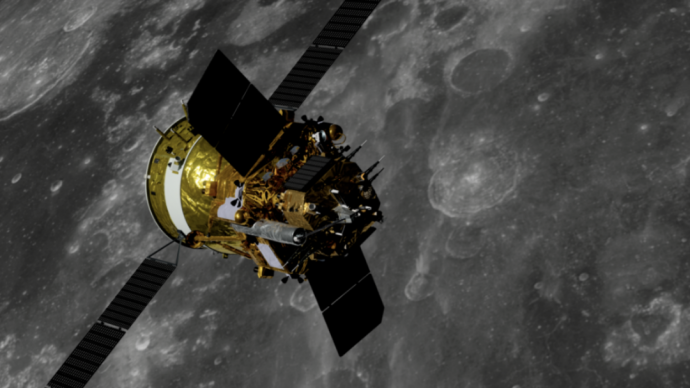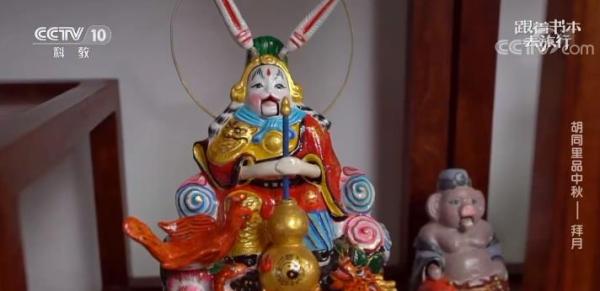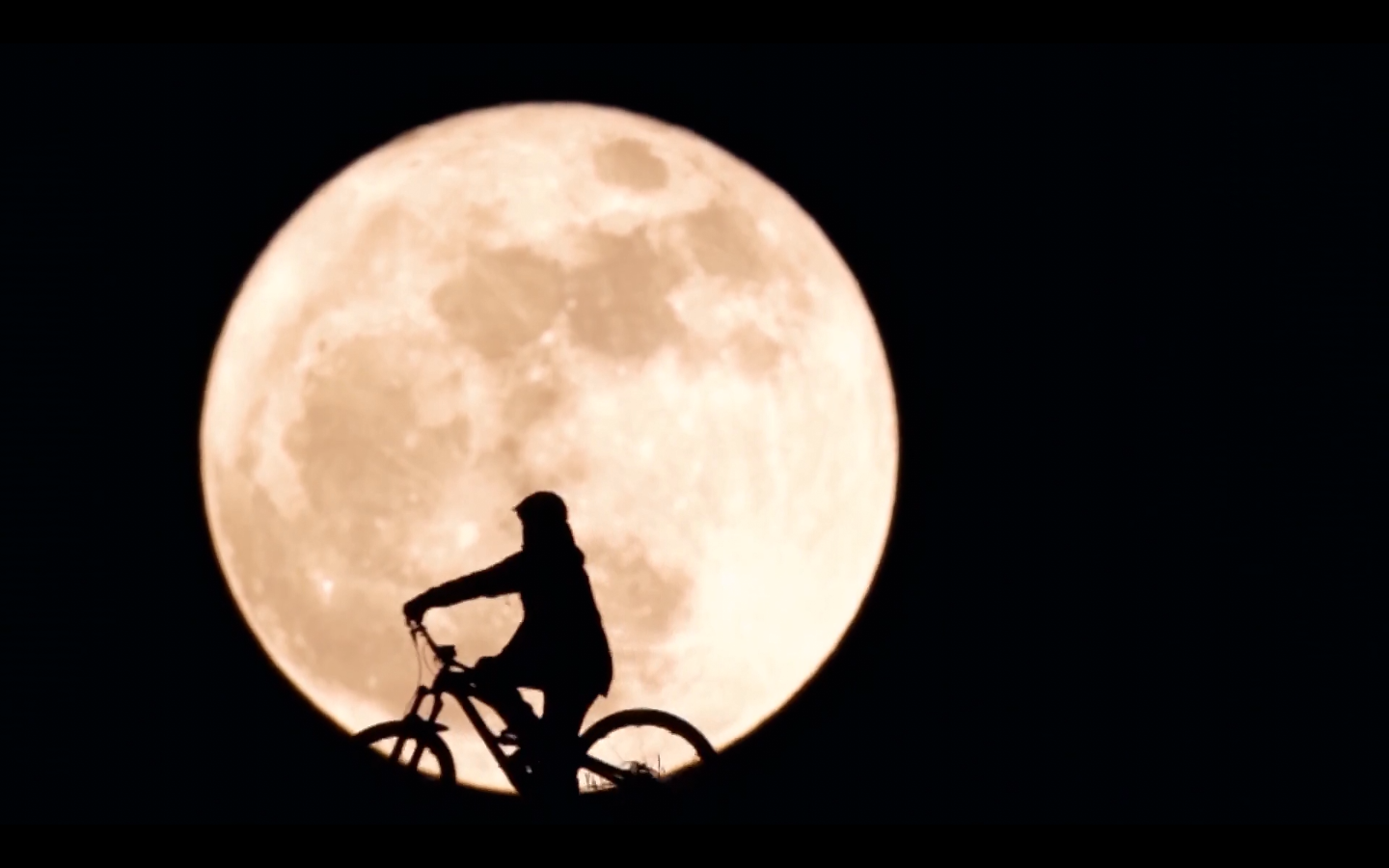
Every year on the fifteenth day of the eighth lunar month, it is one of the four traditional festivals in China - the Mid-Autumn Festival. Mid-autumn night, the moon is bright. Since ancient times, the Mid-Autumn Festival has had the customs of offering sacrifices to the moon, admiring the moon, worshipping the moon, eating moon cakes, appreciating sweet-scented osmanthus, and drinking sweet-scented osmanthus wine. For Chinese people, Mid-Autumn Festival is not only about moon cakes and holidays, but also means reunion. Every Mid-Autumn Festival, the whole family reunites to share the joy of family.
In your spare time during the Mid-Autumn Festival, you can drink osmanthus wine under the osmanthus tree, make moon cakes with three or five friends, or choose a few documentaries that are suitable for the whole family to watch during the Mid-Autumn Festival.
Searching for documentaries related to the Mid-Autumn Festival, there is really a moon everywhere, and the moon cannot be avoided. When people mention the Mid-Autumn Festival in life, they always think of the moon and the mysterious legends related to the moon. The big and white moon will always make us endless. reverie and yearning.
"Intangible cultural heritage on the tip of the tongue - Cantonese-style moon cakes"
Country/Region of Production: Mainland China
First broadcast: 2018
Single episode length: five minutes
Eating moon cakes is a major custom of the Mid-Autumn Festival because moon cakes symbolize reunion.
The production of moon cakes has become more and more sophisticated since the Tang Dynasty. Su Dongpo has a poem saying, "Small cakes are like chewing moon, and there are crisps and glutinous rice". In the Qing Dynasty, Yang Guangfu wrote: "Moon cakes are filled with peach meat, and ice cream is sweetened with cane icing." It seems that the moon cakes at that time are quite similar to those of today. In the early years of Hongwu in the Ming Dynasty, the general Xu Da captured the capital of the Yuan Dynasty, Beijing, where the remnants of the Yuan Dynasty were entrenched, and the news of the victory reached the capital Nanjing. The Ming Taizu Zhu Yuanzhang, who was playing chess, was ecstatic. The moon cakes that convey the message are rewarded to the subjects. Since then, moon cakes have become the "legal" food of the Mid-Autumn Festival, and it must be eaten.

Screenshot of "Intangible Cultural Heritage on the Tip of the Tongue - Cantonese-style Mooncakes"
This documentary focuses on the most popular Cantonese-style mooncakes. Lianxianglou is still one of the most popular brands in Laoguang. Speaking of the origin of lotus seed paste, in the late Qing Dynasty and the early Republic of China, Chen Weiqing, the baker of Lianxianglou, accidentally boiled the water when he was boiling lotus seed syrup, because the catering industry Paying attention to "collecting files" and not wasting raw materials, he wanted to crush these lotus seeds as fillings to make moon cakes, which became an instant hit.
Lotus paste filling is the core soul of Cantonese-style moon cakes. Xianglian, because of its smoothness, mellowness, plump particles and high starch, has become the first choice for making lotus paste. Boiling lotus seed paste is also a skill, and this process alone takes 6-7 hours.
The unique feature of Cantonese-style moon cakes is that the cake skin is "syrup skin". The cake skin is mixed with syrup, lye water, peanut oil and flour. It is different from other moon cakes. The quality of the syrup determines the taste and quality of the cake skin. sell.
I learned how to make moon cakes, and I also know why a bite is full of happiness, because it is really a calorie bomb. In addition to food, the film emphasizes the ingenuity and cultural connotation of handmade mooncakes. Whether it is Beijing-style mooncakes, Cantonese-style mooncakes, or Suzhou-style mooncakes, the mooncakes on the Mid-Autumn Festival are always full of the taste of hometown and reunion.
"Follow the Book to Travel" "The Mid-Autumn Festival in the Hutong-Worship the Moon"
Country/Region of Production: Mainland China
First broadcast: 2020
Single episode length: 18 minutes
One of the most important customs during the Mid-Autumn Festival in ancient times was worshiping the moon and offering sacrifices to Lord Rabbit. The style of Lord Rabbit and the way of worship are very particular during the Mid-Autumn Festival.

Screenshot of "Mid-Autumn Festival in the Hutong - Worshiping the Moon"
In the episode "Traveling with Books" about the Mid -Autumn Festival, the children followed Lao She's "Lord Rabbit" to experience the custom of old Beijingers worshiping the moon together. This episode lasted for about 18 minutes. The children watched the paintings of folk artist Yang Xin, and listened to him saying that there are not only private moon worship, official moon worship, but also royal moon worship. Yang Xin also acted as a guide and took everyone to the place where the royal moon worship was made, and explained to everyone the long history of moon worship.
"Why did the ancients worship Lord Rabbit on the Mid-Autumn Festival?" "Is Lord Rabbit a rabbit?" "Why is Lord Rabbit called Lord?" "Is Lord Rabbit a god?"
Children always have all kinds of novel questions about traditional culture. The starting point of "Traveling with Books" is to find the answers by practicing, so that the immersive experience will make the knowledge points more firmly remembered.
The film explains to the children one by one. For example, why do you call Grandpa Rabbit Grandpa? Because rabbits have done a lot of things for our common people, people were sick in those days, and rabbits sent from heaven came to the world to make medicine and save people from water and fire, so people have a kind of gratitude to rabbits, and they have formed an image when they come and go. Over time, he became a "rabbit master".
"Magic Moon"
Country/Region of Manufacture: UK, Mainland China
First broadcast: 2018
Single episode length: 60 minutes
From bilibili & BBC, The Amazing Moon takes audiences to explore the beauty of the moon and its impact on our natural world. Photographing the moon at night is difficult, but new low-light cameras and digital telescopes are finally able to capture the face of the moon in natural light against the global beauty.

Screenshot of "The Magical Moon"
Dive into the deep waters of the South Pacific, where coral reefs grow in sync with the phases of the moon; experience the Mid-Autumn Festival in Hong Kong, China, how the whole city is under the spell of the moon; watch a total lunar eclipse turn America’s day into night. See the magical moon from a whole new perspective on this amazing lunar expedition.
This documentary has a high degree of word-of-mouth spread. It allows us to "observe" the moon from all directions and see the various "expressions" of the moon. Like a big hand pulling the moon closer, allowing us to get to know it up close, children will appreciate the amazing moon from a whole new perspective and know how it relates to us, whether it's a blood moon or a total lunar eclipse or a supermoon, this film Take you to understand the various forms of the moon, as well as the principles behind these phenomena, and experience the wonderful beauty of nature.
"Fly to the Moon" Seasons 1 and 2
Country/Region of Production: Mainland China
First broadcast: 2019
Single episode length: 30 minutes
From ancient times to the present, the moon has always aroused people's infinite poetry and reverie. "You don't know the moon when you are young, and you call it a white jade plate." ... Humanity has never stopped researching and exploring the moon.
At the beginning of the new year in 2019, the Chang'e-4 probe successfully achieved the first soft landing on the far side of the moon, and reached a new peak in the course of human lunar exploration, reflecting China's wisdom, China's creation, and China's new height in the field of international aerospace .

Screenshot of "Fly to the Moon"
The documentary "Flying to the Moon" co-produced by CCTV Science and Education Channel and the National Space Administration News and Publicity Center focuses on the human exploration of the moon, the achievements of China's lunar exploration project, especially the soft landing of Chang'e-4 on the back of the moon. Scientific principles, technological innovation, etc. Record historical moments such as the launch of the Chang'e-4 probe and the moon landing. The first season has a total of 5 episodes of 30 minutes each.
The second season of the film continues to follow the story of the scientific exploration mission; it not only details the detection findings of Chang'e-4 and the important scientific achievements, but also records the launch of Chang'e-5 on November 24, 2020, and the December 2020 launch of Chang'e-5. Landed on the moon on the 1st and began to collect lunar soil samples, interpret the technical links in detail, and restore the real exploration process.
From the probe's take-off from the lunar surface, the story of Chang'e 5's journey home begins. Take-off from the lunar surface, space chase, the first unmanned rendezvous and docking of humans in lunar orbit, the transfer of lunar samples and re-entry and return, this series of actions is both thrilling and exciting. On December 17, the Chang'e 5 returner successfully landed in the predetermined area of Siziwang Banner, Inner Mongolia.
"Flying to the Moon" was filmed in 4K ultra-high-definition, and built the world's first 4K mixed reality real-time digital special effects production studio. It innovatively uses a large number of original 3D animations in the expression of popular science, intuitively interprets scientific principles, and truly restores the lunar space environment. , bringing the audience an immersive visual experience.
In general, "Flying to the Moon" is the official documentary of China's lunar exploration. It uses a large number of exclusive first-hand materials or the first public scientific achievements to interpret Chinese wisdom in lunar exploration and understand the latest achievements of China's aerospace technology for the audience. Worth recommending to children.
"Apollo 11"
Country/Region of Manufacture: United States
First broadcast: 2019
Length: 93 minutes
Director Todd Douglas Miller's documentary "Apollo 11" has been hailed as "fifty years of cinematic memorabilia". Produced by Neon and CNN Film, this 93-minute documentary features footage captured on first-discovered 65mm large-format film and more than 11,000 hours of raw audio for one of the most iconic and historic moments in human history Show a new perspective.

"Apollo 11" poster
Apollo 11 was the fifth manned mission of the "Apollo Program", and Neil Armstrong and Buzz Aldrin became the first humans to set foot on the moon. The small Apollo 11 spacecraft landed near the Sea of Tranquility on the lunar surface, and Armstrong reported to the command center. The two spent two and a half hours on the lunar surface, using drilling to obtain lunar core samples and taking some pictures. The success of Apollo 11 marked the victory of the United States in the space race, and also fulfilled the previous promise made by President Kennedy that the United States would send astronauts to the moon and return successfully before 1970.
The scene of the Saturn V rocket being transported to the launch pad in the documentary "Apollo 11" is very similar to the scene in the movie "Star Wars". The sense of grandeur that comes with that big scene in the film at the beginning of the film comes from the 6.5 million-pound machine rather than the special effects. Composer Matt Morton's score complements the film, with percussion accompanying the drums, sometimes agitated and sometimes soothing. Timely music and sound effects set off a moving picture. The film combines the rigor of science with the romance of art.
Landing on the moon is undoubtedly the greatest creation of mankind in the 20th century and one of the greatest collective actions in human history. A highly restored documentary like "Apollo 11", especially recording the first moon landing, is of extraordinary significance to mankind.


